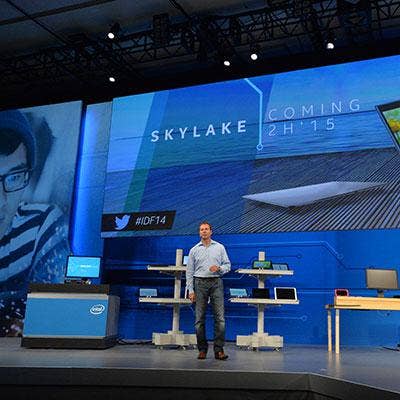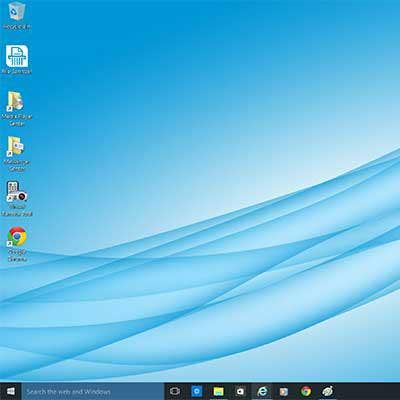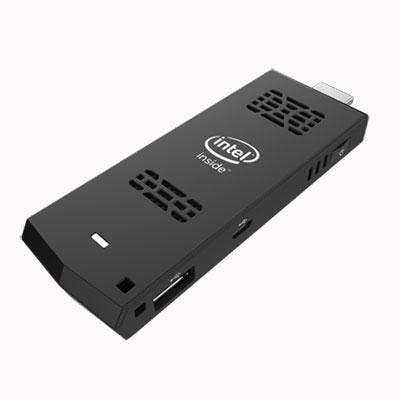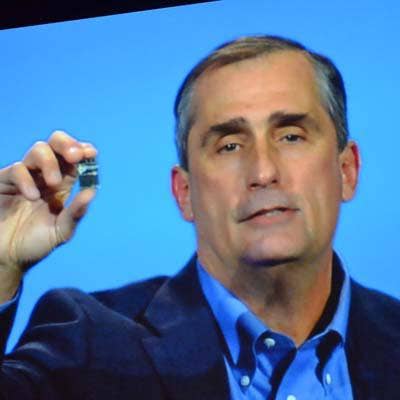CRN Exclusive: Intel Americas GM C.J. Bruno On Innovation, Skylake-Windows 10 And Data Center Growth

Opportunities For The Intel Channel
C.J. Bruno is fired up. Intel's vice president and Americas general manager said his company's next-generation Skylake processor combined with Windows 10 will provide an Intel "on steroids" experience for the business market.
Speaking with CRN ahead of this week's Intel Solutions Summit in Dallas, Bruno talked about partner opportunities around PC refresh and Skylake-Windows, channel success in the data-center market and how Intel's new technology group will impact partners.
Here's what Bruno had to say.

What is the rallying cry for channel partners at Intel Solutions Summit?
We are at an unprecedented point in terms of innovation, with an amazing opportunity across the board. The message to the channel and our beloved Intel Technology Provider partners is, use that innovation to grow your business: engage with us, harvest the opportunity in verticals, Internet of Things, data center and of course traditional compute devices.
It is exciting. That is why we are particularly fired up going into ISS. With the level of innovation we have, the robust market opportunity across the entirety of our business, and the passion of these folks to morph their businesses to take advantage of the opportunities, we are pumped up!

Talk about the Skylake-Windows 10 opportunity.
You have heard how fired up I am about today's fifth-gen products versus those 4-, 5- or 6-year-old machines. The game gets better with Skylake, which will baptize sixth-generation Intel Core processors when they arrive in the market later this year.
It's unprecedented to have our freshest processor hand in glove with [Windows] 10. Those don't line up perfectly every generation. It's an amazing opportunity for folks. The experience will be better, the performance and responsiveness will be better. It's very exciting to keep the drumbeat of Moore's Law cranking, and to use those transistors to generate even more exciting experiences that Windows 10 and Skylake sixth-gen platforms will be able to deliver.

What kind of opportunity do you see in the business market for Skylake-Windows 10?
We're getting very strong indications from the CIOs that we have personal touch with, not just in North America, but around the world [that they are very interested in Skylake-Windows 10]. They seem to be on their front seat, so to speak, very anxious, and they're communicating to us that they're really looking for a much swifter adoption of Windows 10 in the enterprise than they've experienced with previous OSs. That is yet another opportunity for all of us, including our Intel Technology Provider channel partners, to capitalize on.

What are the biggest opportunities for partners?
We are seeing double-digit sustained growth in our data-center business, across compute, storage and networking. We are seeing double-digit growth in our traditional embedded -- now [Internet of Things] -- business. We are seeing not quite double-digit growth in North America, but solid movement, in our solid-state drive business and our nonvolatile memory business.

Talk about the success partners are seeing in the data-center business.
It is really impressive to see how resilient and vibrant the channel really is. We have watched guys hone their skills in [High Performance Computing] and really start to harvest the big-data opportunity. We have watched early adopters of software-defined infrastructure. We have seen people capitalize their businesses in networking and storage and of course, traditional compute. So you look at the data-center business, and what you see is, the growth that is being driven there is around SDI and HPC, and big data, and of course, on a larger scale, around the telcos' infrastructure migration from traditional proprietary vertical stacks to more standards-based horizontal stacks.

Give some examples of channel success in the data-center market.
Colfax [International, Sunnyvale, Calif.] in HPC: Here is a crew that is … on the bleeding edge of adoption of our Xeon E5 technologies, as they solve technical compute challenges for customers that would never, five years ago, have had a channel partner brand on their bid list.
You have got companies like Redapt [Redmond, Wash.] paving the way for SDI solutions that are scalable and reasonably easy to deploy, solving problems for larger enterprises, midmarket companies and certainly small businesses.
You have got some of these guys like Vidyo [Los Angeles] working on workplace transformation solutions with our next unit of computing products.
You have got Eurotech [a supplier of embedded systems based in Italy] expanding their offerings in the IoT space … embracing the device-to-cloud mantra.

Have Intel Technology Providers picked up share in the data-center business?
Yes. If you look at the list of companies providing solutions into the cloud space with the big household name providers and the next wave of folks, that list of suppliers is very different than it was five years back. And many of them -- ZT Group [doing business as ZT Systems], Super Micro [Computer Inc.], the folks from Hyve [Solutions], a division of Synnex -- were not on that list a few years back. They are certainly a presence now.

What does that data-center growth say about the Intel channel?
It is the resiliency, the versatility and their ability to deliver demonstrable differentiation. They win because they are able to be more nimble, be more customized, solve specific problems with tailored solutions. That demonstrable differentiation -- whether it is data center, IoT, devices -- that is right in these guys' wheelhouse and that is why they have been critical to us for decades.

What new devices are you most excited about?
A killer tablet experience and a full-feature PC in a single device that we call 2-in-1, at an affordable price. That's a game-changing play.
Look at what's going on in the mini- space, the small form factor space. Look at what's going on in the enthusiast space. Look at all-in-ones or portable all-in-ones. We've even been able to get our technology on a compute stick (pictured).

Talk about the 4 years old and older client device upgrade opportunity.
We've got hundreds of millions of PCs installed in the world -- a couple of hundred of million of which are in North America alone -- that are 4 years [old] and older.
The experience that we are able to deliver to these customers with any flavor of the innovative products I've talked about is what knocks business decision makers and consumers off their chairs: the battery life, the designs themselves, the wireless display, the wireless data transfer, the wireless docking, improved security, best-in-class manageability. … These things are … revolutionary compared to the old 4-, 5- and 6-year-old compute devices that these businesses or consumers have in their homes or offices today. I've been in this business three plus decades and I've never been this excited.

What's the message for partners with regard to upgrading the installed base?
Use the breathtaking innovation we now are delivering to refresh that base. Use their customer relationships. They know where they've installed systems over the years. Bring the innovation to the doorstep of those folks! It's time to improve the experiences for all their customers with the innovation that we're delivering.

Do you expect PC refresh cycles to shorten at some point?
I do. It's tough to compare things like that. It's like comparing old generation ballplayers to current generation ballplayers to some degree. The world's a different place. We have an enormous array of choice in the personal compute devices that we choose to use in our personal lives and professional lives.
That level of choice never happened before when we had a single beige box that needed to be refreshed much more quickly. When you have a 2-in-1 device, a phone that seems to be getting larger by the day in terms of screen size, and you’ve got other consumption devices like tablets available to you, it has really morphed.

Will the PC life cycle ever go back to two and a half years?
We'll learn together over time. It’s a matter of the enormity of choice and the enormity of opportunity, and the experience that gets delivered. And it is just so much better with any of the newer devices than with the 4- or 5- or 6-year-old compute devices that are being replaced.
[PC life cycles] started to come down in 2014 a bit, as there was an enormous rush of folks refreshing enterprise clients in small, medium and large businesses with the end of service of (Windows) XP. That’s a good example of an accelerator that helped bring down that refresh window a little bit.

How will the recent creation of a new technology group affect partners?
[Intel CEO] Brian [Krzanich] (pictured) has organized the company around growth strategies. He's unified our client business, and we have now a very focused effort around that continuum of client devices. Our data-center business has been unified for some time. All of our Internet of Things work is led by our IoT group. Those three primary business units exist. The next leg of Brian's growth strategy is around growing our new businesses.
We've had for some time an incubation investment team that's separate from Intel Channel Alliance Program. We have our new wearables team in that new business group. We have our Intel Labs, our research arm of the company, in that new business unit.
This newly formed technology group unifies the rest of the growth business opportunities under one roof.

Talk about channel investment even as you drive new business growth.
We're very proud that we continue to bring more resources to bear in the channel. For example, in North America, we have all the assets under my roof, which are accessible to (Intel North American Channel Chief) Todd (Garrigues) (pictured) and his beloved customer base. That has not been the case throughout Intel's history. We've broadened the amount of capability we bring to bear to our Intel Technology Providers compared to a couple of years back. That, coupled with the fact that more and more of those business units have focused resources within them that think of the channel priorities first.

What is the message with regard to Intel channel commitment?
We've long said a strong, diverse, versatile customer base is good for Intel and good for the industry. That has not changed one bit. In fact, we've grown our [ITP] base to more than 20,000 now in North America, and their utilization of the program has grown along with that growth. … They are taking advantage of the capabilities. Active ITPs, for example, sell richer configurations of systems than do nonactive ITP members. The active members are leading, with 2-in-1 mix almost approaching 20 percent of their notebook shipments, for example, … where the rest of North America is at 16 percent. So that early adopter, versatile, flexible extension of our technologies … has never been more important … as we roll into this age of innovation.